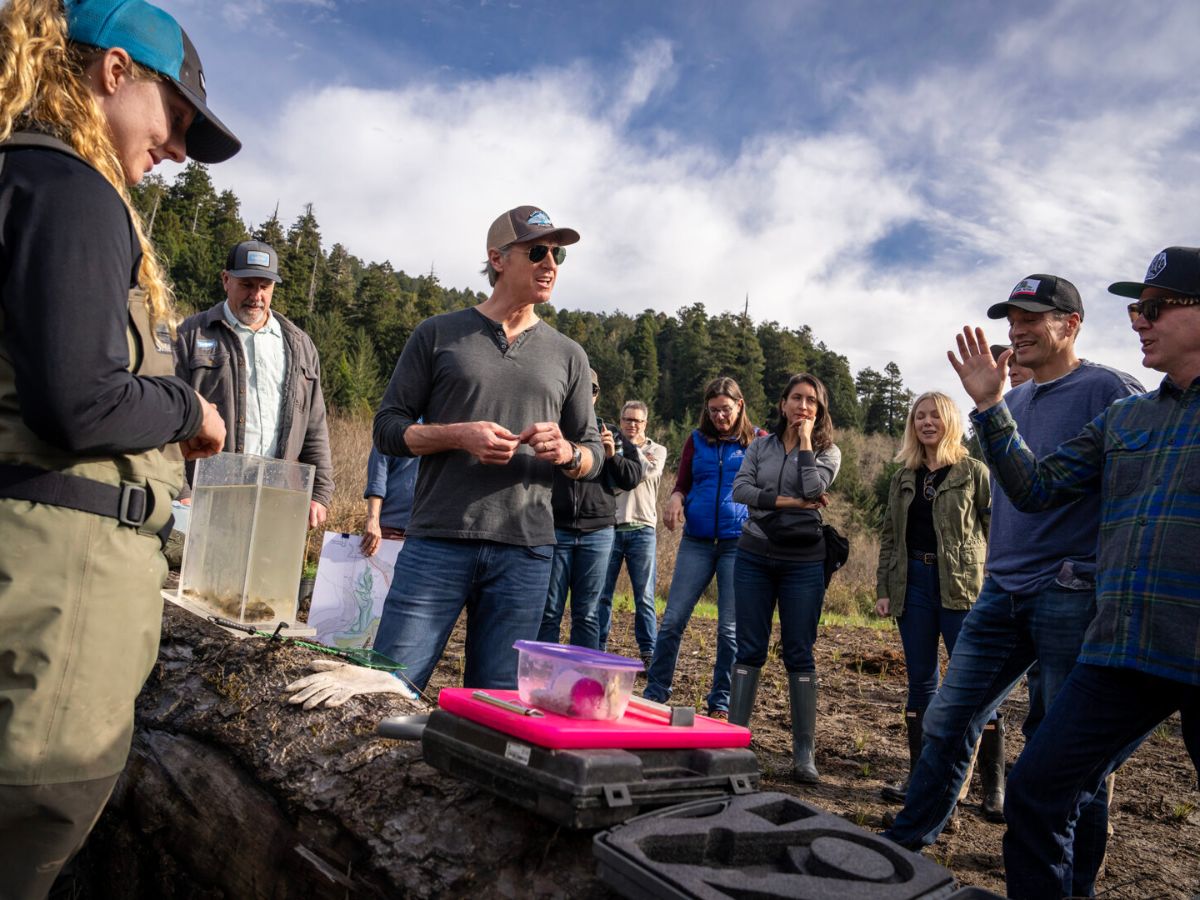A wetland has been recently restored at the edge of Prairie Creek, a stream that runs through ancestral Yurok land in Northern California’s Redwood National Park. Upon initial observation, the site appears unassuming: a stretch of muddy terrain bordering the stream, adorned with patches of indigenous plants scattered across the ground.
Additionally, tranquil pools diverge from the primary current of the creek. This meticulously restored small town is home to a variety of uncommon juvenile fish. California Gov. Gavin Newsom was present on Monday as researchers showcased juvenile chinook and coho salmon, as well as steelhead and cutthroat trout, which were carefully pulled from the water and presented in a transparent plastic container.
Governor Newsom and his team recently visited this area to witness firsthand the efforts being made to restore salmon populations. During the visit, Newsom also unveiled a comprehensive plan aimed at safeguarding California’s beloved fish species.
The state’s salmon population has suffered greatly from sediment pollution caused by logging, overfishing, and the extensive loss of their natural habitat as a result of dam construction over the years. With the rise in summer temperatures and the depletion of snowpack, the survival of salmon is being threatened due to human-caused climate change. The diminishing cold water supply is becoming a major concern.
Governor Newsom’s latest plan involves some bold actions that were once considered radical. These actions include the removal of multiple old dams and the construction of infrastructure to help salmon bypass these dams and reach their spawning grounds. The plan also highlights innovative approaches to restoring salmon habitat.
Several projects are being developed in collaboration with tribes and conservation groups. One noteworthy program involves Central Valley rice farmers who are allowing their flooded fields to serve as rearing habitat for fish. This initiative demonstrates the potential for combining agriculture and restoration efforts, offering a promising outlook.
See full story here: hcn


